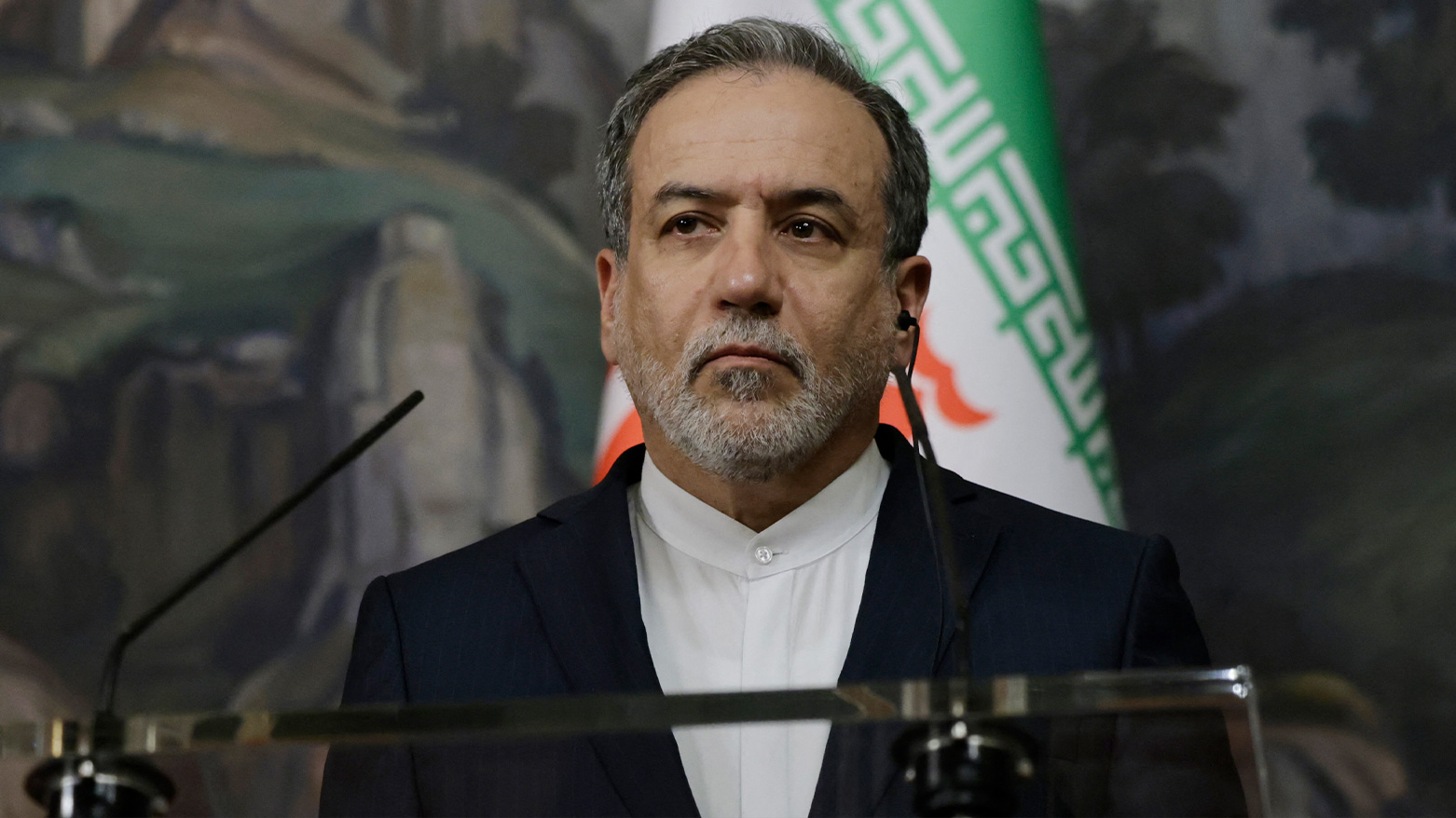Elevator Diplomacy: Will Rome’s Doors Stay Open?
In his newly translated book The Power of Negotiation, Araghchi portrays diplomacy as patient, bazaar-style bargaining—now tested by U.S. demands and global scrutiny.

By Kamaran Aziz
ERBIL (Kurdistan24) — The United States and Iran resumed critical nuclear negotiations in Rome on Saturday, signaling a fragile yet potentially transformative chapter in their decades-long adversarial relationship. According to a detailed report by Al-Monitor, Iranian Foreign Minister Abbas Araghchi leads Tehran’s delegation in this second round of indirect talks, facilitated by Oman’s Foreign Minister Badr Albusaidi. U.S. President Donald Trump’s envoy, Steve Witkoff—a former real estate executive and longtime Trump confidant—heads the American delegation. The talks are taking place under Oman’s discreet mediation at the Omani ambassador’s residence in the Italian capital.
These discussions follow a preliminary round in Muscat on April 12, which culminated in a surprise 45-minute direct meeting between Araghchi and Witkoff, according to a Wall Street Journal report. The meetings represent the most substantive diplomatic engagement between the two countries since Trump’s withdrawal from the 2015 Joint Comprehensive Plan of Action (JCPOA). That move, which reinstated sweeping sanctions on Iran, triggered years of mounting tension and retaliatory nuclear advances by Tehran.
As reported by Al-Monitor, Araghchi brings both experience and symbolic continuity to the talks. As one of the principal architects of the 2015 nuclear agreement, he is now navigating an altered strategic landscape—one defined by Iran’s internal economic malaise, regional contraction, and growing skepticism at home. In his recently translated Arabic book The Power of Negotiation, Araghchi presents diplomacy as a patient, calculated enterprise rooted in the psychological stamina of bazaar-style bargaining. This method, once again, is being tested in the face of U.S. demands and international scrutiny.
The political context is increasingly complex. According to The New York Times, Israel is watching the Rome negotiations with concern, as it fears any U.S. compromise might allow Iran to continue its uranium enrichment under a verification regime. U.S. Secretary of State Marco Rubio has publicly declared that any new deal must ensure Iran “never” obtains a nuclear weapon—either now or in the future. Meanwhile, Witkoff has sent mixed signals, initially suggesting low-enrichment might be acceptable before shifting toward the demand for complete dismantlement of Iran’s enrichment program.
The International Atomic Energy Agency (IAEA), which would be tasked with verifying any agreement, has raised red flags about gaps in its knowledge of Iran’s nuclear inventory. As reported by the Wall Street Journal, the agency has lost continuity of knowledge over Iran’s centrifuge manufacturing since 2021, when Tehran ceased sharing surveillance footage and limited inspections. IAEA Director General Rafael Grossi, who visited Tehran this week and is expected in Washington next, emphasized that “we don’t have much time” to reach a deal.
One critical issue is whether the IAEA can obtain a credible picture of Iran’s current centrifuge inventory and past nuclear activities. According to the Wall Street Journal, Iran has not adequately explained the presence of undeclared nuclear materials found at several sites, nor has it accounted for advanced centrifuge components that could potentially be used to produce weapons-grade uranium. Without such clarity, any future deal would face considerable verification challenges.
Meanwhile, Iran is demanding binding guarantees. According to the Wall Street Journal and IRNA, Araghchi is expected to propose that any new agreement include assurances that the United States will not unilaterally withdraw again. Iran is even considering the proposal that the U.S. compensate Tehran for losses incurred if such a withdrawal were to occur—an idea previously floated during talks with the Biden administration but ultimately rejected.
Ali Shamkhani, a senior advisor to Supreme Leader Ayatollah Ali Khamenei, confirmed via IRNA that Iranian negotiators have been granted “full discretion” to pursue a “balanced agreement” based on nine principles: seriousness, assurance, balance, sanctions relief, rejection of dismantlement models, avoidance of threats, urgency, containment of disruptive actors like Israel, and facilitation of foreign investment.
While both sides continue to define their red lines, the broader strategic stakes are clear. According to The Washington Post, the Trump administration is internally divided, with hardline advisers pushing for military options and others favoring diplomacy to avert a regional war. Within Iran, hardliners remain skeptical of engagement, and any perception of capitulation could spark domestic backlash.
Trump has given negotiators a two-month window to finalize a deal. Experts such as Ellie Geranmayeh of the European Council on Foreign Relations note that both sides are still calibrating their expectations. She warns that if the U.S. insists on total dismantlement of Iran’s enrichment capacity—a red line for Tehran—the risk of military confrontation increases sharply.
Despite the tensions, there are signs of diplomatic pragmatism. As part of a potential deal, Iran may allow Russia to manage and store its excess uranium stockpiles under the supervision of the UN, according to reports cited by the Wall Street Journal. This mechanism could serve as a trust-building measure while reducing the immediate proliferation risk.
Ultimately, the talks remain shrouded in strategic ambiguity. Oman’s disciplined mediation ensures discretion, and upcoming rounds may be held in various neutral capitals to maintain momentum. Whether Araghchi’s deliberate, bazaar-informed diplomacy can deliver a breakthrough remains uncertain. But as he writes in The Power of Negotiation, “Opportunities in negotiation are like elevator doors—they open briefly. If you hesitate, they close. And if you want them to open again, you’ll need to convince those inside to come back down.”
With the political, strategic, and temporal stakes so high, the elevator doors in Rome may not remain open for long.
